Kirby’s Dream Land

- Japanese release in April 1992
- North American release in August 1992
- European release in 1992
- Australian release in 1992
- Asian release in 1992
- Brazilian release in 1993
- North American release in May 1996
- Japanese release in March 2000
- Developed by HAL Labs
A Little Piece of Perfection

Close your eyes for just a moment. Imagine a quiet green plain with a comforting wind slowly swaying the grass back and forth. Near the horizon there are rose-coloured mountains. Just go along with it, rose mountains are normal. Taking in the heat of the sun’s rays (the sun has a face, once again it’s totally normal), in the swaying grass is the most serene and sweet character our imagination can muster. It’s asleep, lightly snoring as its basking in the warm glow of the beautiful day. Just like the mountains it’s pink. It’s Kirby. A pink ball of niceness with shoes and cute stubby arms. Its only personal flaw is its voraciousness, but it manages to make that cute too.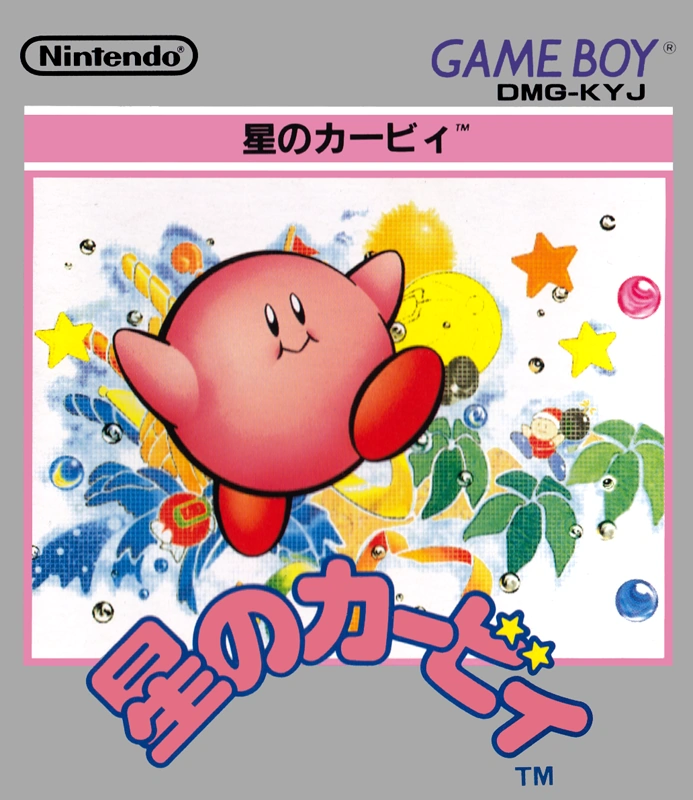
Nowadays, the character’s cheery attitude has been turned into a bit of an ironic in-joke. He’s the cutest, with him being pink and always happy, but he’s also the most badass! The ultimate evil of the universe managed to destroy every single character in the introduction of Super Smash Bros. Ultimate but Kirby survived all that. Because, you see, it’s a secret badass. However, the character was initially created without irony; the gumdrop aesthetic was honest. Kirby was not secretly all-powerful even though it looked harmless. There was no subversion of our expectations. In fact, the aesthetic was a core marketing element of Kirby’s first game. This evolution of Kirby’s character can perhaps be explained by the disconnect between the world of Kirby and the actions it performs. All the verbs at your disposal in Kirby’s Dream Land are indistinguishable from a mature, violent side-scroller platformer like Contra if only Bill and Lance could fly.
SOAR.
DEVOUR.
EMPOWER.
SHOOT.
ATTACK.
DEFEAT.
You relentlessly move forward mercilessly destroying your enemies by swallowing them and throwing their remains at other enemies. The visuals make it a fun jaunt and everyone is happy and cute. Isn’t that wonderful, and essential?
Setting the Stage
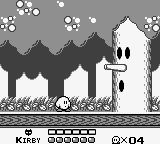
Kirby is the quintessential Nintendo character but it is not a Nintendo creation. It is not even owned by Nintendo; HAL Laboratory owns the rights. How can Kirby be a quintessential Nintendo icon if it’s owned by another company?
HAL Laboratory always had a close relationship with Nintendo going all the way back to the Famicom. When the console was initially conceived, Nintendo had few programmers to make games for its first console with interchangeable software. The savvy people working at Nintendo turned to the people of small company HAL who were able to help out, particularly due to one of their younger programmers, Satoru Iwata. He, along with his other colleagues, were commissioned by Nintendo to work on seminal Famicom titles like Golf, Balloon Fight, and Pinball. Their contributions stayed hidden; neither their company nor their names appeared on those Nintendo titles. When the ’90s rolled around, however, HAL had gotten in an impossible position. Their prestige 1991 Famicom game Metal Slader Glory was unprofitable and they were caught in a financial death spiral. Nintendo’s executives saw potential in HAL and bailed the company (presumably for a controlling stake) but asked that Satoru Iwata, who by this point had gotten a great reputation as a manager, become the new company president. All in all, a quintessential Hiroshi Yamauchi move. This would turn out to be the most important personnel move Yamauchi ever did; Iwata got so respected he ended up succeeding Yamauchi at the helm of the whole of Nintendo a decade later.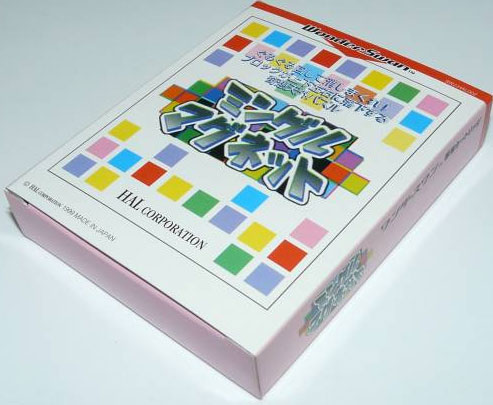 Mingle Magnet for Wonderswan
Mingle Magnet for Wonderswan
Nintendo has tightened its control over HAL Laboratory ever since that fateful 1991 death spiral with the last work of HAL not published on a Nintendo console, Mingle Magnet for Wonderswan, released in 1999. They now seem to be a fully owned subsidiary which makes them what is commonly termed a second-party developer. However, back when they made Kirby’s Dream Land they were in the process of being bailed by Nintendo. Masahiro Sakurai talked about his experience of working for a company going through bankruptcy in his Kirby’s Adventure development video on his YouTube channel. Kirby is the child of this marriage of convenience.
Creating a Placeholder
The father of Kirby, Masahiro Sakurai, was 19 when he created Kirby. He had only one other game credit under his belt, also with HAL; the interesting but obscure Game Boy shooter Trax. Since Nintendo now had a hand in the management of HAL, Hiroshi Yamauchi, the ruthless Nintendo president, decided to task them with a small project to steer HAL back towards profitability. He wanted them to make a Game Boy platformer starring a new mascot. Yamauchi’s mission was accomplished with aplomb; from the moment you open your Game Boy to play Kirby’s Dream Land, Kirby is a fully realized mascot in a game accessible to everyone.
The title screen features a lineup of multiple Kirbys jumping, making faces, doing a bit of moonwalking, generally being cute as hell. You immediately get a sense of joy emanating from this little character. Aside from wondering if there are multiple Kirbys in the world (an unresolved mystery we’ll get back to shortly), you want to buy a plush Kirby just to hug it. As a first introduction its knocking it out of the park. Everything that makes Kirby lovely is there from the first moment except for its seminal copying ability which would appear in the second game. The game even manages to introduce musical themes that are still used today. As a matter of fact the Kirby series has not only kept its songs, it kept its composer; Ishikawa Jun has always been the main composer for Kirby titles. I also want to give kudos to the sound designers for the very fun aspirating sound. Kirby sounds exactly like a vacuum, and it’s perfect. Not everything is perfect but they clearly spent a lot of energy where it mattered for this game.
A Short Look at the Game That Reflects the Brevity of the Game
Here are some elements of the game’s design that reflect a thoughtful design process that will enhance your experience. If you play the game, and wonder why it’s such a great little experience, then these choices explain the great fun you’re having. It’s incredible that so many magnificent design decisions were taken by a team led by such a young developer.
Graphics on Game Boy require a lot of foresight and planning to work well on the original Game Boy screen because its ghosting can make complicated graphics too difficult to see. Kirby’s Dream Land showcases how to create beautiful graphics that still limit the amount of ghosting and keeping the game legible in all scenarios. It amounts to using a healthy dose of whitespace with discrete elements of characters and scenery drawn with thick borders but sparse internal details. Just like Kirby, most everything in the game is a shape with very little internal detail.
Another element that really helps the fidelity of Kirby’s world is the belt scrolling. Belt scrolling describes a locked screen able to move in only one direction with the other axis locked. The screen can move left to right but it will not move up or down and it will not reverse either. If you imagine a level as if it’s painted on an industrial belt, the crank to turn the belt can only go in one direction. Since you’re only scrolling in one plane at a time (most often in this game from left to right) the ghosting is limited to streaks going in one direction. That helps a lot since you get accustomed to the predictable unidirectional ghosting. You don’t think about it but it makes a big difference that ghosting streaks are mostly coming from a single direction. Every stage starts with a short scene of Kirby getting his comeuppance from benign situations. Here Kirby runs after a butterfly that gets its buddies to fight back.
Every stage starts with a short scene of Kirby getting his comeuppance from benign situations. Here Kirby runs after a butterfly that gets its buddies to fight back.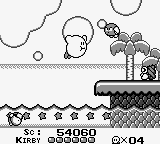 Kirby tries fishing; it gets a mouthful of its own hook and falls in the water.
Kirby tries fishing; it gets a mouthful of its own hook and falls in the water.
There is this saying amongst video game developers that if given a chance players will optimize the fun out of a game. What this means is that if developers give players a cheesy strategy players will use that advantage even if it makes the game boring to play for them. Developers have to account for this fact when designing a game and eliminate any strategies that make playtime boring. Flying in a platformer definitely falls under that axiom; what fun is there in a game where you can fly above every obstacle and eliminate any challenge? You might have fun for a couple of minutes due to the novelty but the appeal wears off quickly. Super Mario World is the golden reference when it comes to a platformer with flying elements. You can fly in the game which could potentially ruin the fun and make the game boring. To keep the game somewhat fun even if you skip levels with the cape you are required a lot of effort to maintain flight. It’s not a simple one button process, meaning you will always have to do something. I don’t feel it’s a perfect solution since a repetitious task is never as fun as running through a gauntlet designed by the very best level designers in the world.
Kirby’s Dream Land has Kirby flying indefinitely if you inhale air. It is a dead simple one-button move, which could definitely ruin the fun. Future games in the series will slow down Kirby’s flight speed and agility, and limit your flight time. There are no such limitations here; Kirby is legitimately flying fast by flapping its tiny little arms. However, the game is not optimizing the fun out of the platforming like Super Mario World.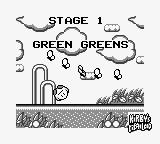
How? The solution to the problem is actually wonderful because it uses the limitations of the Game Boy as a positive. Since the Game Boy has a limited resolution the play area in a platformer is small. In the case of Kirby’s Dream Land, the play area is around eight Kirbys tall. Compared to a game on a CRT that’s a very small play field above your characters’ head. The smaller play field, which cannot scroll up, keeps the player involved because Kirby cannot fly very high. You just hover close to the ground always under the threat of a jumping enemy hitting you. The game also includes many enemies who loiter around the top of the screen, giving you obstacles to avoid even when you’re in the air. So the small Game Boy screen actually makes a game more fun for once!
Unique in Scale and Scope

The game is simple and short, and unique in that regard. There are so few platformers like it. Kirby’s Dream Land does not have a save function but it doesn’t matter. You can easily clear the game in less than an hour. Anytime I think of a short platformer all the titles that come to mind are on Game Boy, with the exception of A Short Hike. I ask you, what is wrong with a game you can finish in an hour? Is there anything fundamentally wrong with an hour-long game? There isn’t, it’s simply a different artistic object. Not every platformer has to be extremely long, not every game has to stretch into infinity until you’re bored out of your head. Even the further adventures of Kirby would turn into long games immediately after this game with Kirby’s Adventure being a long-ass title requiring many hours to complete. It’s unfortunate that we were collectively offered ever longer games. We could have had tons of fun platformers like A Short Hike for decades but instead everything had to be way too long all in the name of value. Ultimately, I hope we see more platformers akin to Bowser’s Fury in the future; a clear concept that’s fun for around two hours. I sincerely hope that it is the future of platformers as a genre; Mario’s Odyssey was way too long and meandering. Platformers could benefit from the unique experiences that a short puzzle game like Unpacking provides.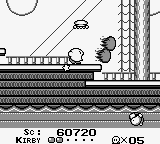 If you want to play the game and you want a more involved challenge, try the bonus mode. It’s properly difficult.
If you want to play the game and you want a more involved challenge, try the bonus mode. It’s properly difficult.
Marketing Meets Aesthetic
There’s a link between the game’s presentation and its difficulty. Because it’s a short and easy title, it needs to tell potential buyers subconsciously. A Short Hike does it by literally being called a short hike. There’s no question that this game is not meant to be difficult or long. Kirby’s Dream Land features a cute character, usually a way to say that a game is for younger players. It also used the word dream in the title, which shouldn’t imply something challenging. Kirby’s Nightmare Hellscape calls to mind something much different: a difficult gauntlet with demons and guns. Basically, I think of Doom. I guess they ended up putting the word nightmare in the title of the remade version of Kirby’s Adventure for Game Boy Advance, Kirby: Nightmare in Dream Land, but by that point Kirby was a well-known and popular character. They didn’t need to signal as strongly what to expect with the marketing. Kirby’s Dream Land was a smash hit in no small part due to its marketing and themes. It’s an easy platformer kids will love but it’s so well made that everyone should play it.
Conclusion
Kirby’s Dream Land could only happen on Game Boy. It’s a very short game featuring very little in the way of difficultly. Because of that it’s the first game I ever finished.
When I was a kid, I owned two platformers at opposite ends of the Game Boy spectrum: Donkey Kong Land and Kirby’s Dream Land. I have already talked about Donkey Kong Land and its atrocious choices. It’s a terrible game for the limited Game Boy screen that ignores the shortcomings of the screen. Kirby’s Dream Land, released three years earlier, is in contrast a wonderful game for the unique screen of the Game Boy. It respects the limits of the portable system’s little green screen and creates a memorable game that sets the stage for a new mascot still popular to this day. If HAL Laboratory had not respected the limits imposed on them by the Game Boy we wouldn’t be talking about Kirby anymore, and Sakurai probably would not have become Nintendo’s biggest star developer of the 2010s.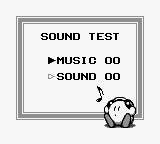 The game even has a proper ending that rewards your efforts. Kirby turns into a hot air balloon!
The game even has a proper ending that rewards your efforts. Kirby turns into a hot air balloon!
Oh, I totally forgot! I was supposed to get back to the mystery of the many Kirbys! When you finish the game, during the ending cinematic, Kirby can be seen dropping on a stage with a crowd barely visible at the bottom of the screen. They’re all perfectly round shapes, only seen in shadows, which leads me to believe that Kirby was envisioned as the member of a whole species of Kirbys. They seemed to have abandoned that idea.
This article was first published on the .
This article was last modified on the .